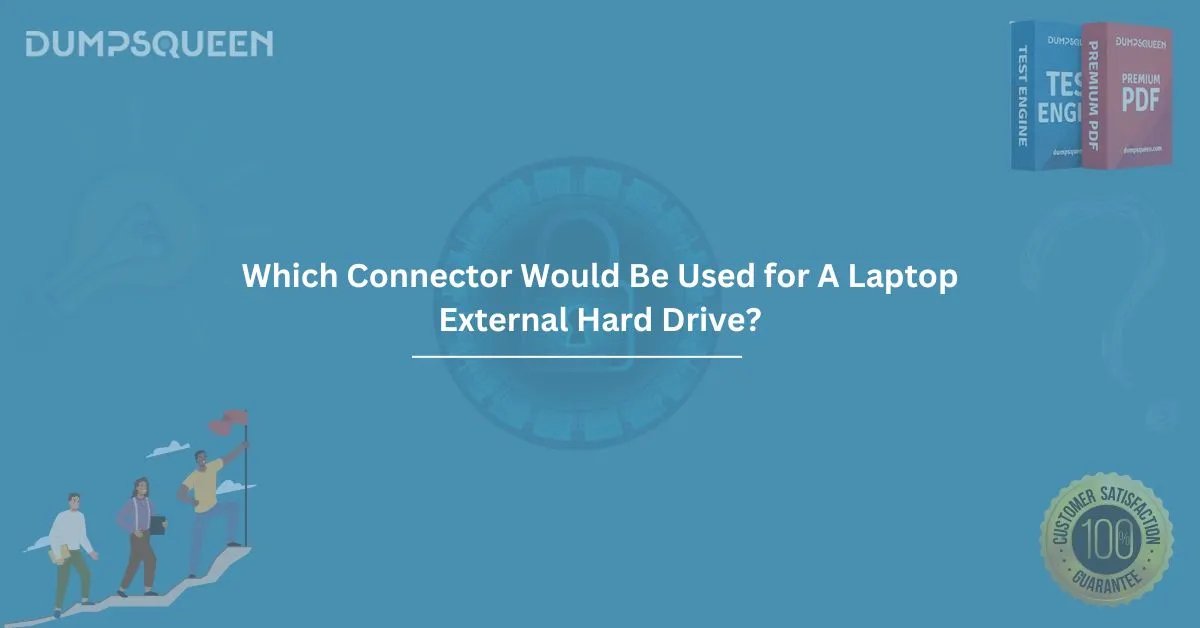External hard drives are essential for expanding storage capacity, backing up data, and ensuring portability across different devices. However, choosing the right connector is crucial for ensuring speed, compatibility, and reliability. If you're wondering, "Which connector would be used for a laptop external hard drive?", this guide will help you understand the most common options available and their pros and cons.
Understanding External Hard Drive Connectors
An external hard drive connects to a laptop using different types of connectors, each offering various speeds and compatibility options. The most commonly used connectors for laptop external hard drives include:
- USB (Universal Serial Bus)
- Thunderbolt
- eSATA (External Serial Advanced Technology Attachment)
- FireWire (IEEE 1394)
- Network-Attached Storage (NAS)
1. USB (Universal Serial Bus)
USB 2.0
- Speed: Up to 480 Mbps
- Compatibility: Widely compatible with most computers and devices
- Pros: Affordable, widely available
- Cons: Slow compared to newer versions
USB 3.0 / USB 3.1 / USB 3.2
- Speed: Ranges from 5 Gbps (USB 3.0) to 20 Gbps (USB 3.2 Gen 2x2)
- Compatibility: Backward compatible with USB 2.0
- Pros: Faster data transfer, widely available
- Cons: Requires compatible ports for full speed
USB-C
- Speed: Up to 40 Gbps (with Thunderbolt 4 support)
- Compatibility: Works with modern laptops and smartphones
- Pros: Reversible design, high-speed data transfer
- Cons: Requires an adapter for older laptops
2. Thunderbolt
- Speed: Thunderbolt 3 and 4 offer speeds up to 40 Gbps
- Compatibility: Works with Apple devices and high-end Windows laptops
- Pros: Extremely fast, supports daisy chaining
- Cons: Expensive, limited compatibility
3. eSATA (External SATA)
- Speed: Up to 6 Gbps
- Compatibility: Older laptops with eSATA ports
- Pros: Faster than USB 2.0, low latency
- Cons: Not as widely used, lacks power supply
4. FireWire (IEEE 1394)
- Speed: Up to 800 Mbps (FireWire 800)
- Compatibility: Used mainly in older Apple and professional video editing systems
- Pros: Reliable for video editing
- Cons: Obsolete, replaced by USB and Thunderbolt
5. Network-Attached Storage (NAS)
- Speed: Depends on the network (Gigabit Ethernet up to 1 Gbps)
- Compatibility: Works with multiple devices over a network
- Pros: Great for backups and shared storage
- Cons: Requires network setup, slower than direct connections
Choosing the Best Connector for Your Laptop External Hard Drive
When selecting a connector for your external hard drive, consider the following factors:
- Speed Requirements – If you need fast data transfer, Thunderbolt or USB-C are the best options.
- Compatibility – Ensure that your laptop has the right port. Older laptops may need USB-A, while newer ones support USB-C and Thunderbolt.
- Use Case – For general storage, USB 3.0 is sufficient. For professional work, Thunderbolt or eSATA is preferable.
- Budget – USB options are more affordable than Thunderbolt and NAS setups.
Conclusion
When selecting an external hard drive for your laptop, choosing the right connector is essential for achieving the best performance. USB-C and Thunderbolt are the most common high-speed options, while USB 3.0 remains a cost-effective solution. eSATA and FireWire are now outdated but may still be useful for legacy devices. If you need a shared storage solution, NAS is a great option.
By understanding the different connectors, you can ensure compatibility and efficiency when using an external hard drive with your laptop.
Sample Questions on External Hard Drive Connectors
1. Which of the following is the fastest external hard drive connector for laptops?
A) USB 2.0
B) Thunderbolt 3
C) FireWire 400
D) eSATA
Answer: B) Thunderbolt 3
2. What is the main disadvantage of using eSATA for external hard drives?
A) High latency
B) Requires an external power source
C) Not widely supported on modern laptops
D) Slow data transfer speeds
Answer: C) Not widely supported on modern laptops
3. Which connector is commonly used in modern Apple laptops for external hard drives?
A) FireWire
B) USB 2.0
C) Thunderbolt
D) eSATA
Answer: C) Thunderbolt
4. What is one advantage of using a NAS (Network-Attached Storage) device for external storage?
A) Requires no internet connection
B) Can be accessed by multiple devices over a network
C) Faster than Thunderbolt
D) Uses FireWire for better speed
Answer: B) Can be accessed by multiple devices over a network
Limited-Time Offer: Get an Exclusive Discount on the CISM Exam – Order Now!



